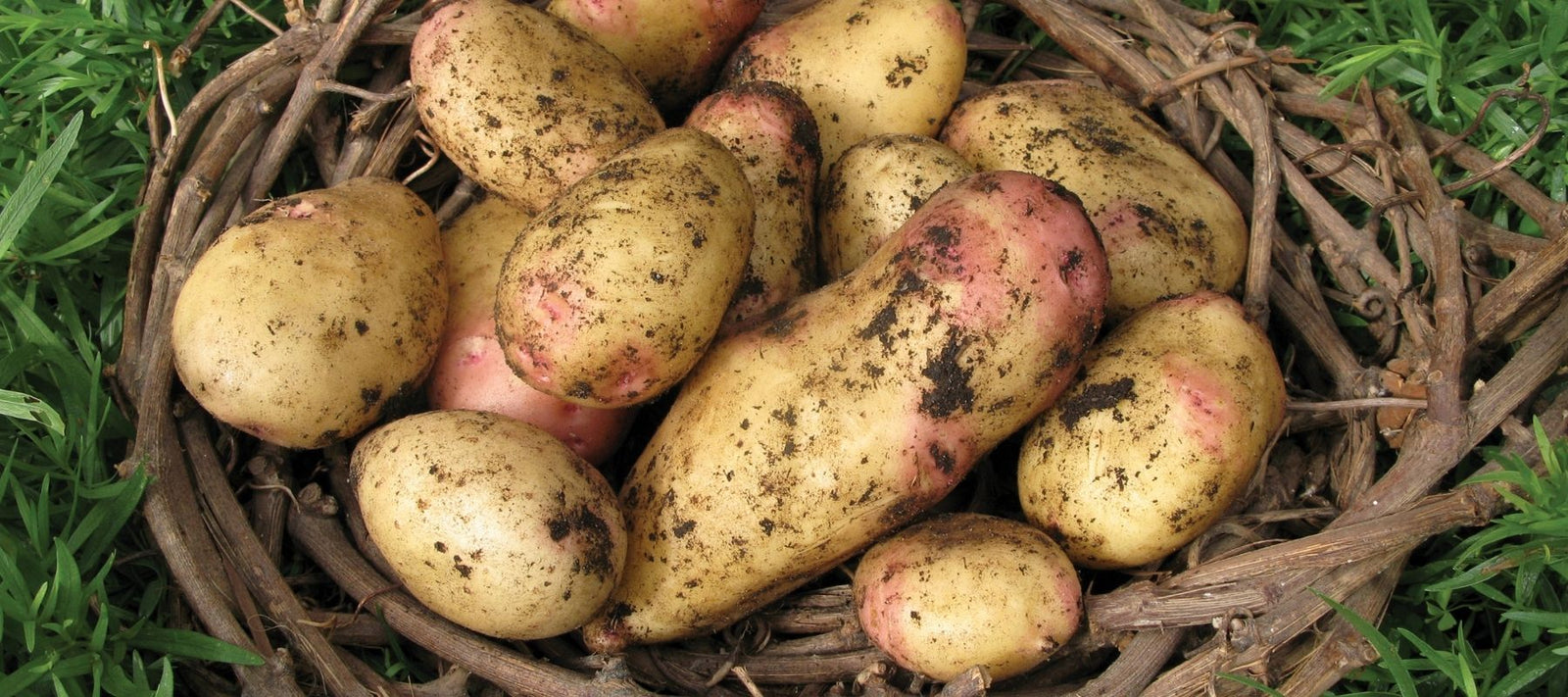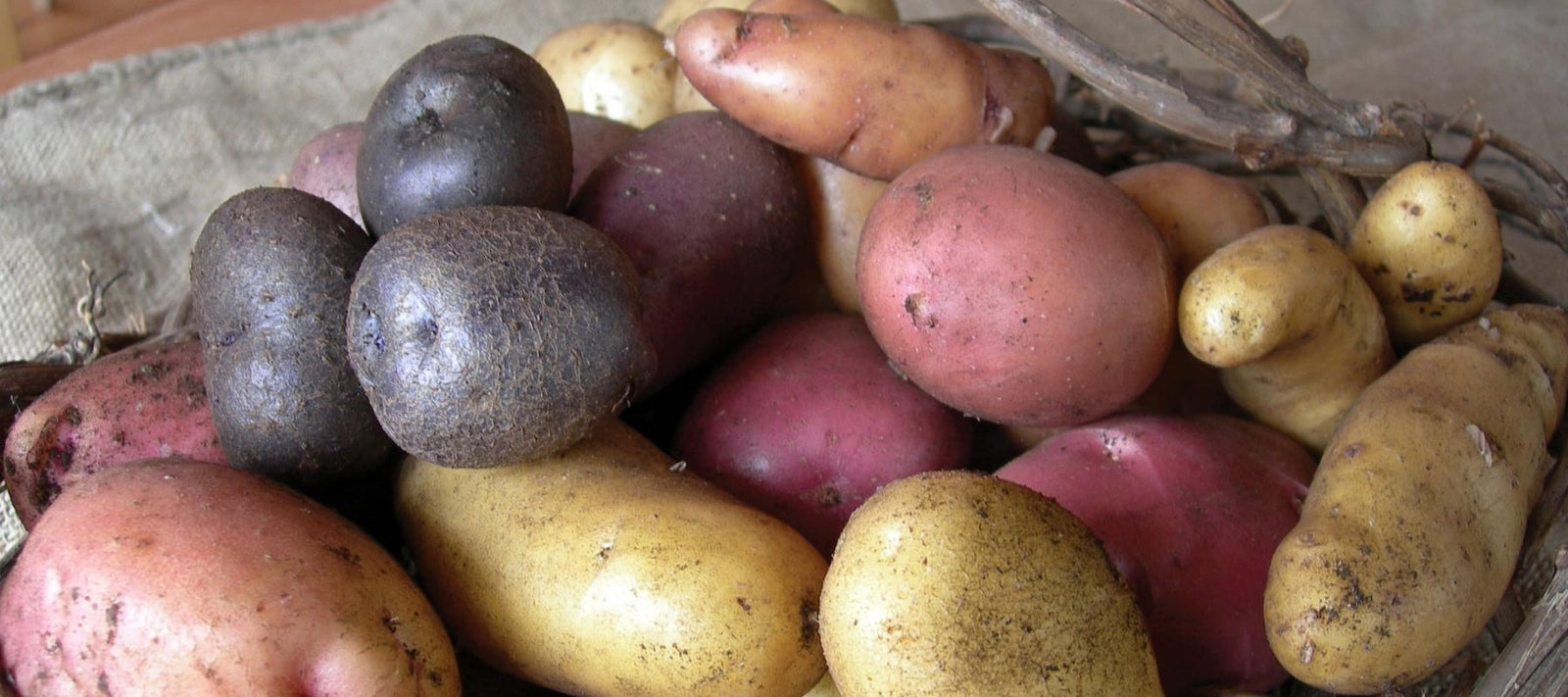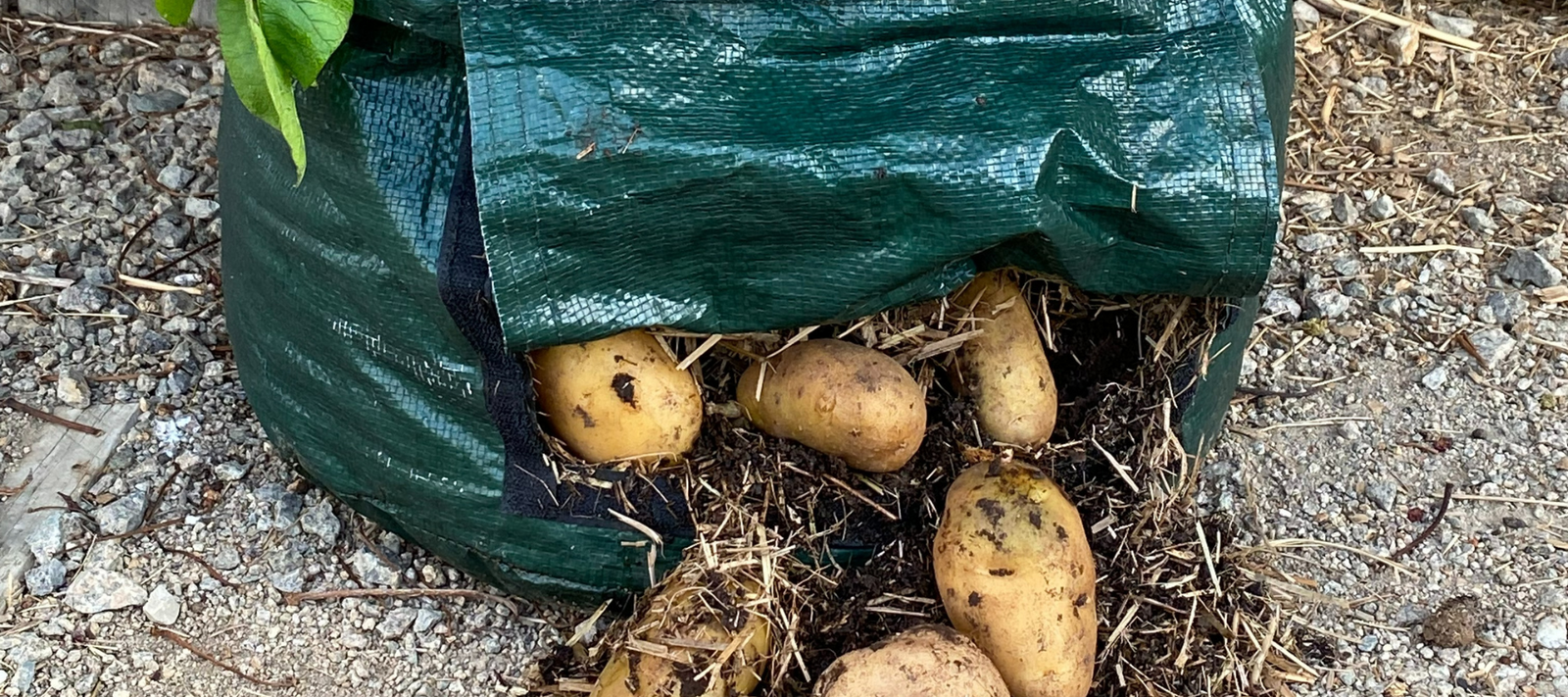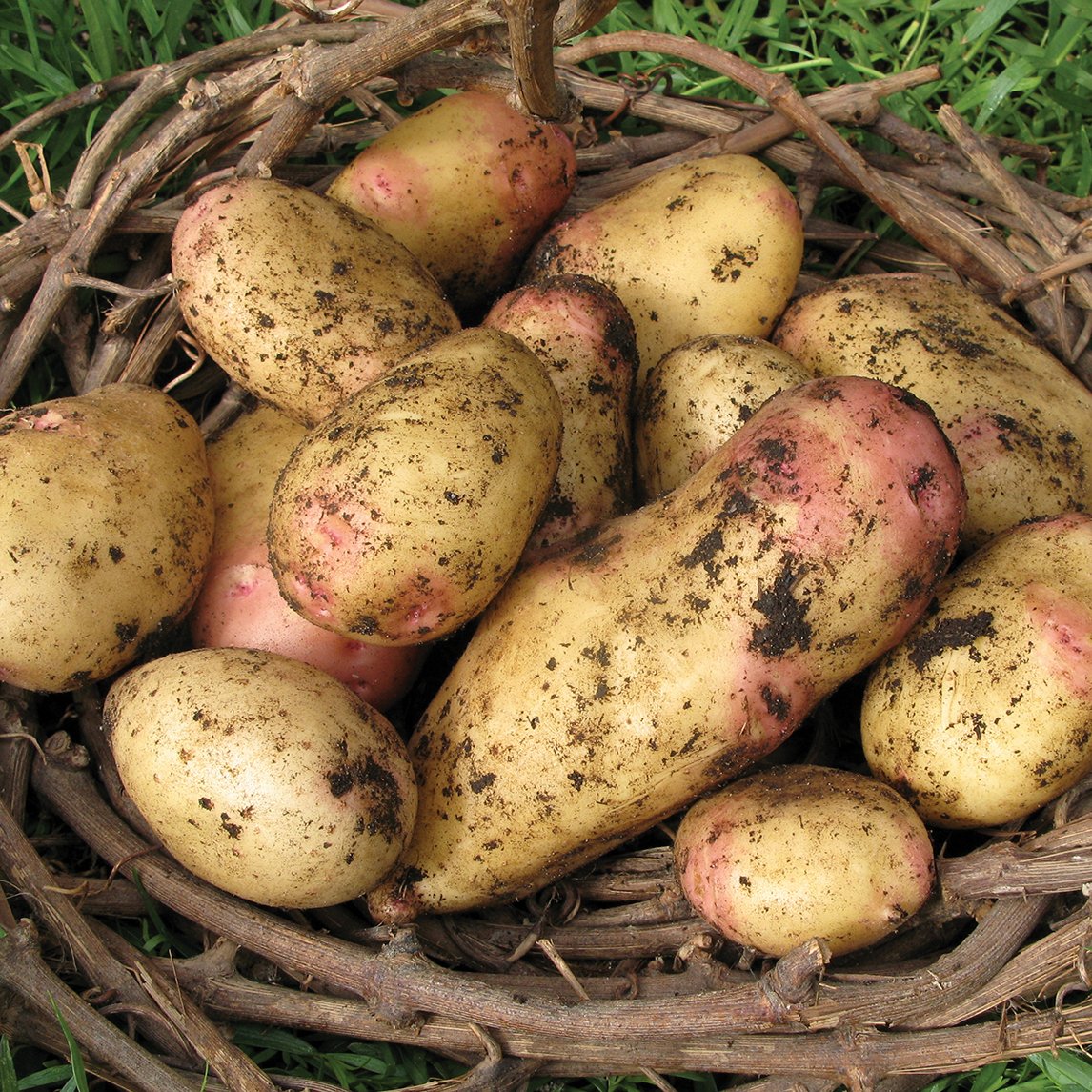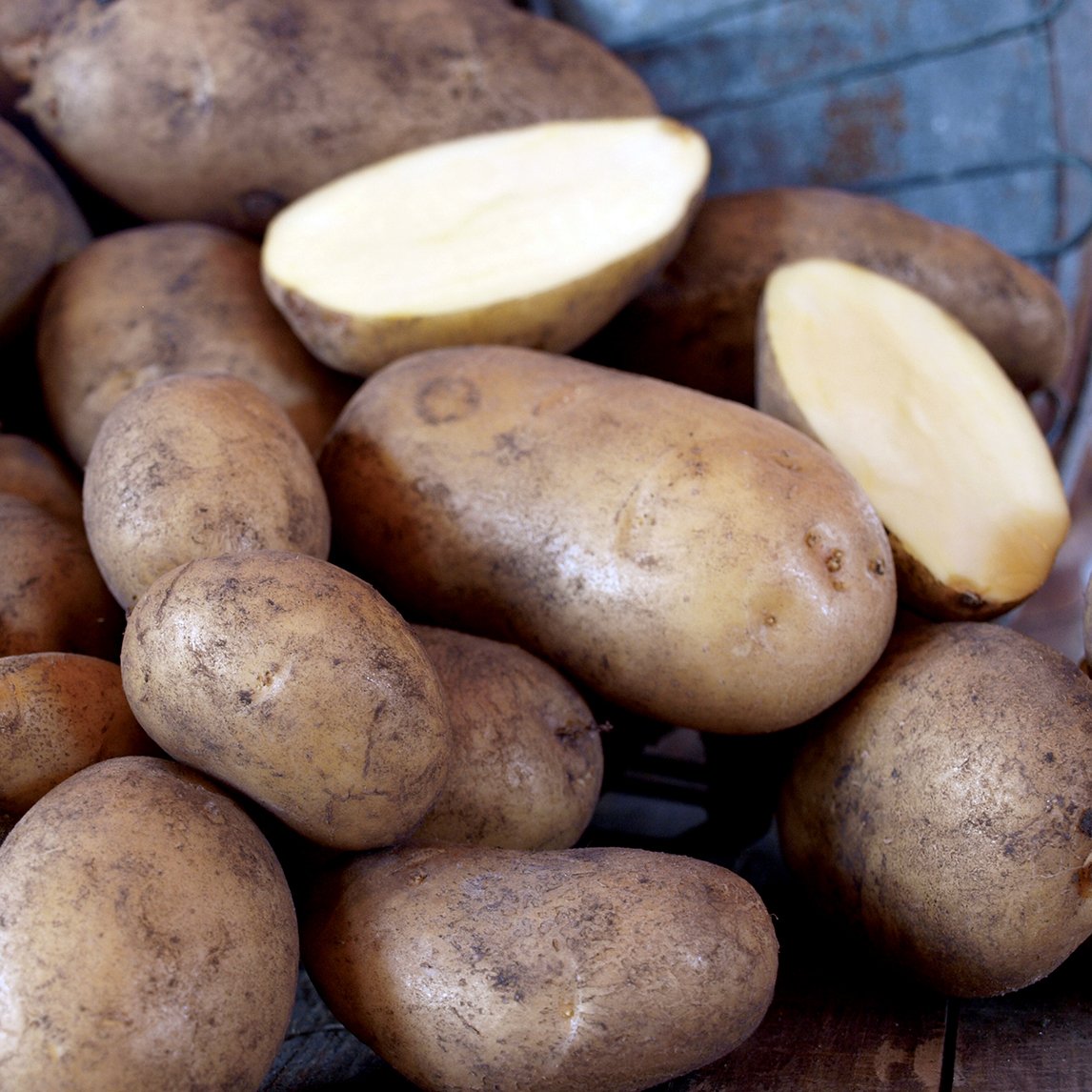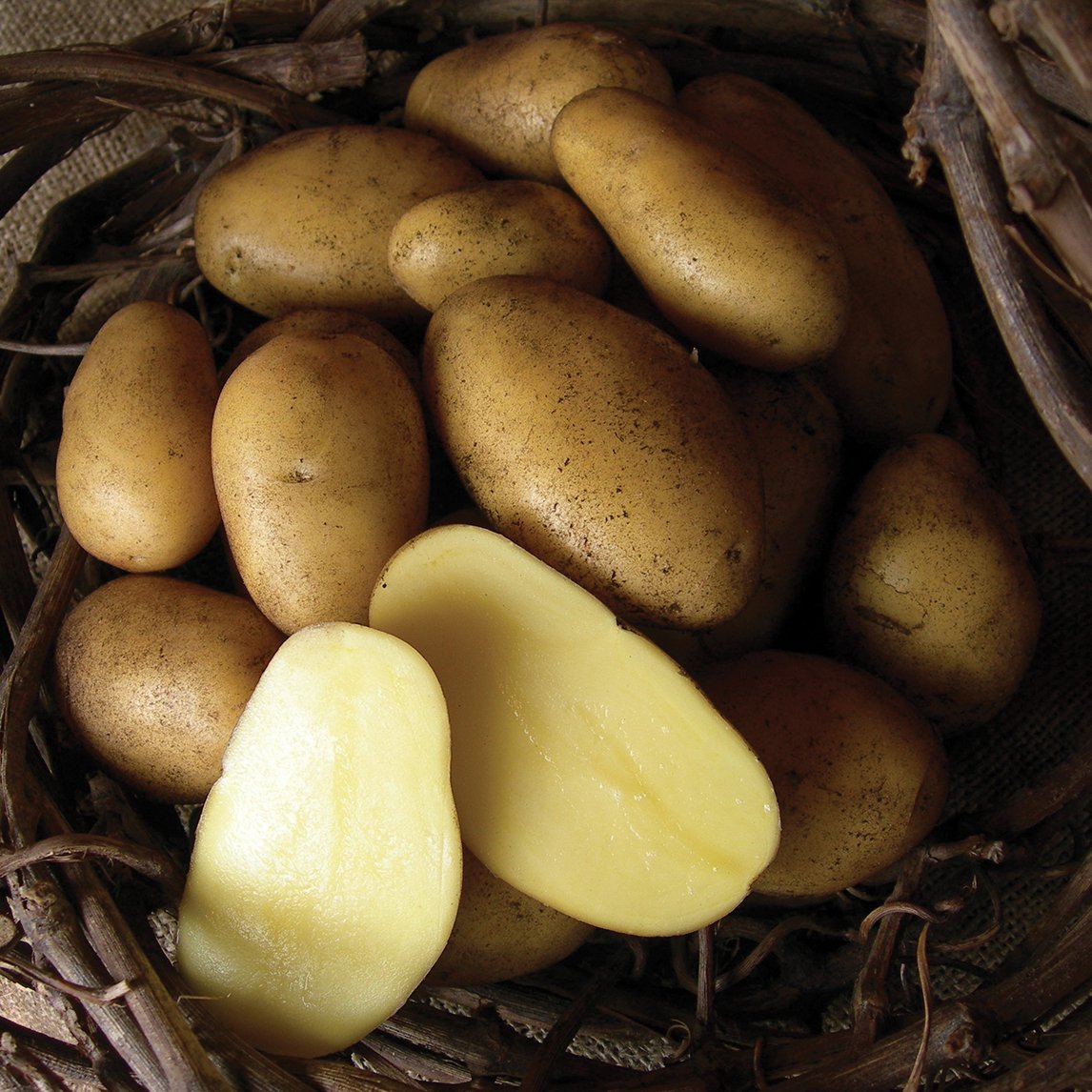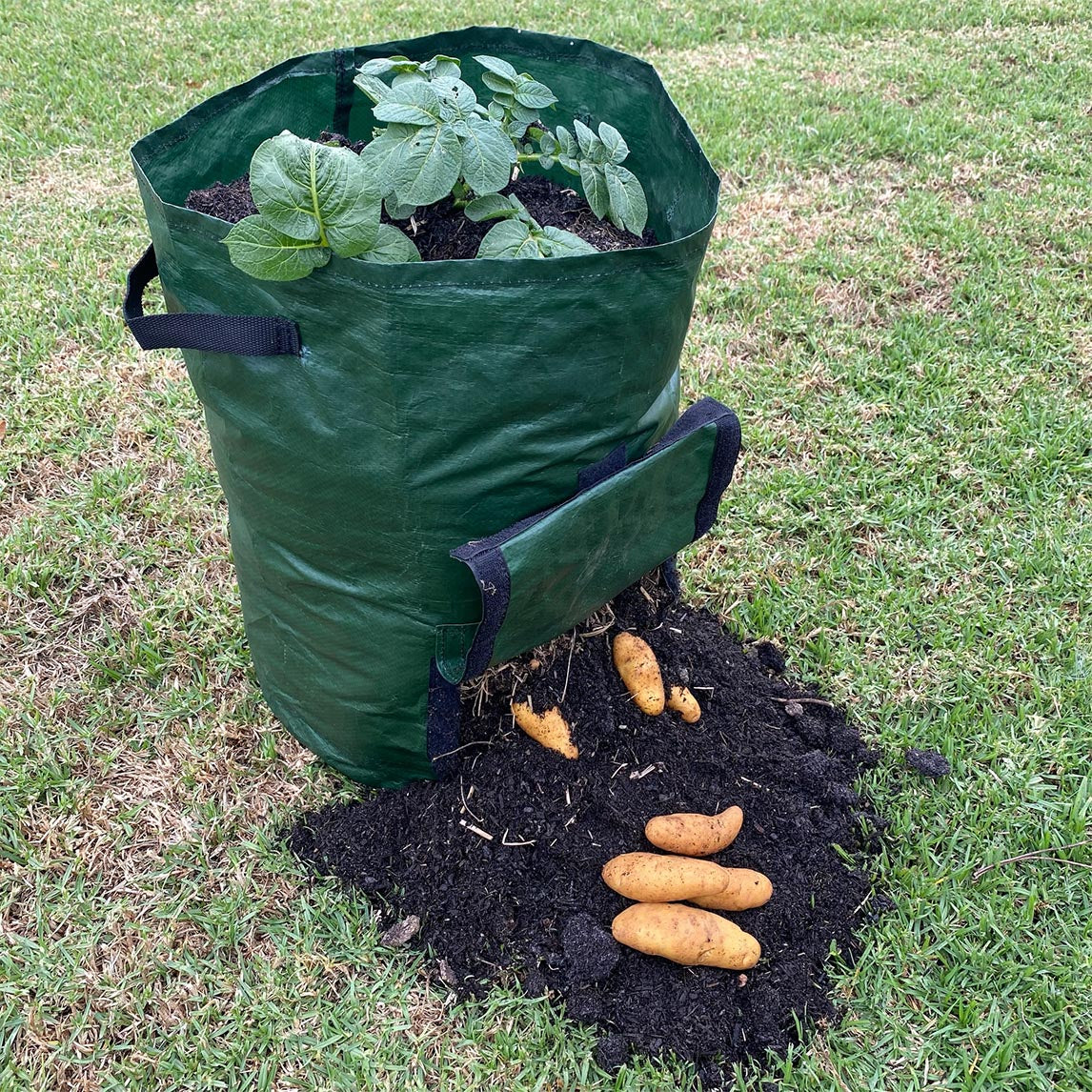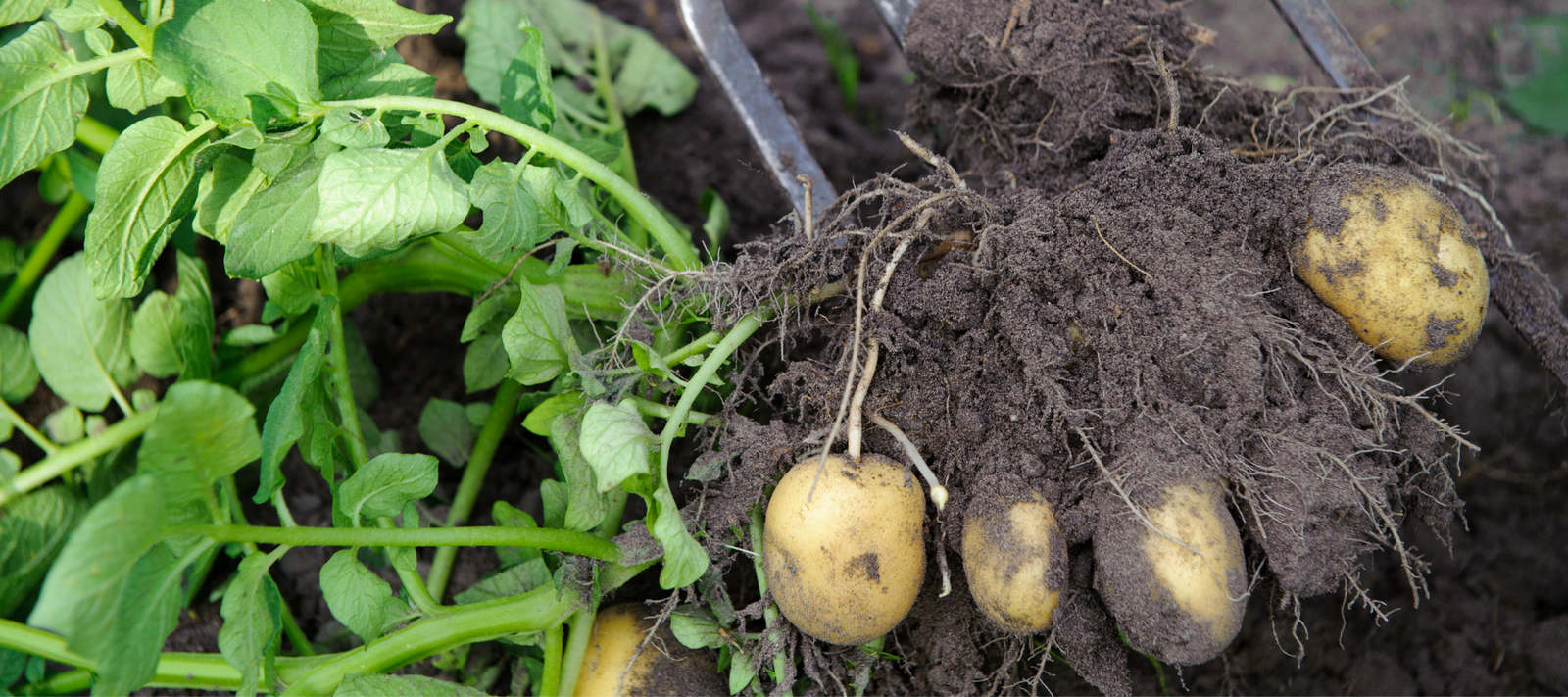
Potatoes - Solanum tuberosum
Soil: Rich, well drained and sunny. Mulch to keep soil moist.
Plant: Plant 10cm deep, 40cm apart in 1m rows. Bank up soil above tuber.
Harvest: 120 days. 30 days after flowering.
Potatoes are one of the oldest food crops known to man and were cultivated by American Indians in seasons and areas that were too cold for maize. Related to tomatoes, Solanum tuberosum reached Europe in the 1570s and some say they were the greatest treasure brought back to Europe from the New World. Potatoes are inextricably linked to the explosion of the Irish population and its subsequent collapse. Ireland's heavy soil, abundant rain and temperate climate suited the growing of potatoes better than any other part of Europe. Unfortunately, the genetic base was so narrow that the inbred clones were susceptible to disease, which led to the Irish Potato Famine and he deaths of 1.5 million people between 1846 and 1851.
Monocultures encourage the concentration of pests and diseases, and modern commercial potato growers depend on a huge array of pesticides, herbicides and fungicides to ensure a successful crop. By growing your own and planting lots of varieties, you can reduce chemical use and discover the amazing culinary variety of potatoes.
Seed potatoes are not technically seed, but an identical clone of the parent, just as offset bulbs of daffodils are genetically identical to the parent daffodil. As clones, they cannot evolve or adapt to varying environmental conditions, as seed can. Hence modern commercial potato crops are extremely vulnerable to seasonal and cultural variations. So take out a biological insurance policy, and plant lots of different varieties to ensure a good crop.
Cultivation
Potatoes are not fussy as to soil, but it does need to be well loosened and should not have grown potatoes for at least 3 years. Adding organic matter will help retain moisture in the soil and this is vital for potatoes, as they demand plenty of water when the potatoes are forming, from flowering time to harvest. Potatoes also enjoy the addition of potash and blood and bone to the soil.
Use certified disease free seed potatoes to lesson the chances of disease, and plant them 10cm deep when the soil temperatures reach 15°C. The healthiest plants come from seed that has been planted whole, rather then cut. Seed can also be sprouted in a warm cupboard, and then planted out.
Hill up the soil or heap mulch around them, as they grow to exclude the light. Remember that all parts of the potato plant are poisonous except tubers that have no green tinge. ‘New’ potatoes can be dug before the plants wither, or harvest ‘old’ potatoes when the plants have died down. In frost free areas cut the plants down and cover with straw to stop them resprouting. Leave the crop in the ground for 2-3 weeks before digging so the skins harden, before storing in a dark airy spot. One seed potato should yield 10 potatoes.
Growing directly in the garden
- Prepare the soil by adding compost or well-rotted cow manure. Potatoes like a rich, but well-drained soil, so do not plant below ground level or where water gathers in winter.
- Plant your potatoes about 10cm deep and 30cm apart. Leave about 80cm between each row.
- Sprinkle with some Blood and Bone and water in well. Keep moist, but not wet.
- As the plants grow, mound soil up along the stem to a height of around 30cm.
- Repeat throughout the season as the potatoes grow.
Growing in a wire frame
- Make a cylinder of chicken wire about 1m in diameter and support with 3-4 star pickets or strong garden stakes.
- Prepare the soil at the base of the cylinder by digging it over well and adding compost or well-rotted cow manure.
- Plant approx. 4 potatoes in the prepared soil and cover with straw, manure and a sprinkling of Blood and Bone.
- As the plants grow, add more straw and manure so that the tips of the stems are still visible. Repeat throughout the season as the potatoes grow.
- Harvest potatoes by removing the wire and uncovering your crop. Use the straw as mulch on your gardens.
Growing in a large container
- Prepare a large container eg. rubbish bin or half wine barrel to ensure they have adequate drainage.
- Place a thick layer of straw and well-rotted manure at the base of the container. Plant about 4 potatoes.
- Follow the wire method above, but when harvesting it you will have to cut the bin or dig out the potatoes.
Growing in potato bags
- Plant 4 potatoes per bag, 10cm deep after the chance of frost has passed. Prepare the bag by filling the bottom half of the bag with potting mix or a good compost.
- Place the bag in full sun and protect it from frost.
- Once your potatoes start to sprout - keep filling the bag up with compost, potting mix or straw so the tips of the shoots are still able to be warmed by the sun.
- If you want to feed your potatoes, sprinkle a handful of Blood and Bone or Dynamic Lifter over the straw mix.
- Tip: Compost will produce better results than potting mix. The mix needs to be free-draining so the combination of straw helps create optimal drainage. Do not overwater
Watch our video on growing in potato bags
Harvesting your crop
When the plant has flowered and the leaves begin to yellow, you can harvest your ‘new’ potatoes. These have a very thin skin and do not store well but taste delicious cooked straight from the garden.
Do not water your potatoes again. This is easy when grown in a tower or tatey bag as it’s easy to “bandicoot” a few new spuds without exposing the entire crop.
Alternatively, you can leave your potatoes for 2-3 weeks from when the plant has died off to let the skins thicken. This allows them to be stored for longer. You can then carefully dig out your tasty crop and store in a well ventilated but dark place.
Pests and diseases affecting potatoes
Potatoes have their share of issues but, thankfully, most of them can be avoided with good planning and management. Planting multiple varieties is a wonderful natural defence, and practicing good crop rotation will reduce the incidence of nematodes and other pests. Avoid potato scan by ensuring your soil pH is balanced (not alkaline) and plant in well draining soil to make sure your spuds don't get water-logged.
Resistance to pests and disease is strongest from plants grown from seed where male and female flowers transmit inherited ‘survival of the fittest’ characteristics, and seed potatoes sold by Diggers are certified and free from disease.
Never eat potatoes that have turned green or have green shoots as they can be poisonous.



